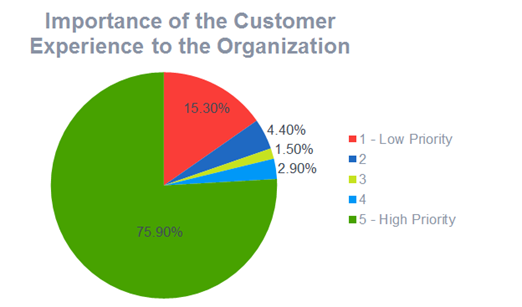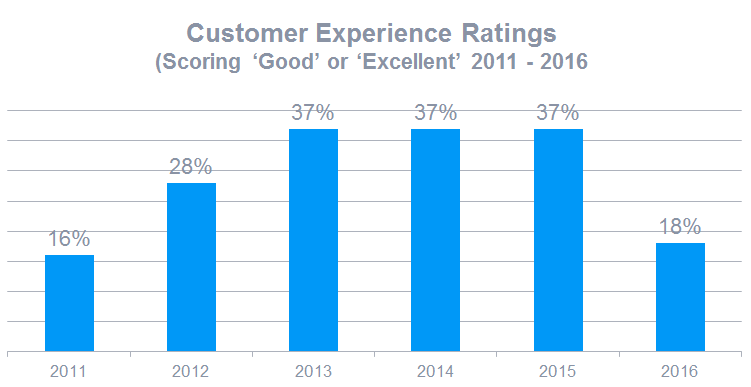What is Customer Experience?
“Keeping customers is about the experience,
and the employees control the culture and
temperature of the business.
Never forget that.” ~Steve Wynn
How Phaceology Improves The Customer Experience
SEE OUR FORMULA HERE
What is customer experience?
Customer experience (CX) is defined by interactions between a customer and an organization throughout their business relationship. An interaction can include awareness, discovery, cultivation, advocacy, purchases and service. Customer experience is an integral part of Customer Relationship Management (CRM) and the reason why it’s important is because a customer who has a positive experience with a business is more likely to become a repeat and loyal customer.
In fact, a study by Oracle found that 74% of senior executives believe that customer experience impacts the willingness of a customer to be a loyal advocate. And the customer experience statistics don’t stop there. If you want your customers to stay loyal, you have to invest in their experience!
Simply put, happy customers remain loyal. It makes sense, right? The happier you are with a brand, the longer you stay with them. And so if you treat your customers poorly and ignore their customer service emails, then they are more likely to leave. This is why companies that deliver a superior customer service and experience outperform their competition.
How important is customer experience?
A business cannot exist without its customers, and this is why companies are focusing on how to win new customers and perhaps more importantly, retain existing customers.
A survey by Bloomberg Businessweek found that “delivering a great customer experience” has become a top strategic objective. And a recent Customer Management IQ survey found that 75% of customer management executives and leaders rated customer experience a ‘5’ on a scale of 1-5 (5 being of the highest importance).

The challenge here is that even though it’s a high priority, many companies are failing.
When Bain & Company asked organizations to rate their quality of customer experience, 80% believe they are delivering a superior experience. This is compared to only 8% of customers who believe they are receiving a great customer experience.
So how many brands are truly delivering an excellent customer experience?
Surprisingly, not too many.
The Temkin Group’s recent 2016 Customer Experience Rating study showed a severe decline in customer experience. The biggest cause for concern is that the percentage of good and excellent companies dropped from 37% in 2015 to only 18% in 2016 – it’s lowest rating since 2011.

Customer expectations are rising, and faster than the speed that companies can improve their customer experience. Customers expect every interaction as the best experience they have with any company, so the question is remains, how can your organization create a great customer experience?
The Bottom Line
Customer expectations are higher than ever and word of mouth travels fast! And as the customer becomes even more empowered, it increases the importance of the customer experience. Customer experience is an area that needs constant nurturing and care and with a greater focus on customer experience strategy, companies will realize a positive impact on customer loyalty, higher retention and increased revenues.
Read the entire article>
More About Customer Experience
The Truth About Customer Experience
Companies have long emphasized touchpoints—the many critical moments when customers interact with the organization and its offerings on their way to purchase and after. But the narrow focus on maximizing satisfaction at those moments can create a distorted picture, suggesting that customers are happier with the company than they actually are. It also diverts attention from the bigger—and more important—picture: the customer’s end-to-end journey.
Think about a routine service event—say, a product query—from the point of view of both the company and the customer. The company may receive millions of phone calls about the product and must handle each one well. But if asked about the experience months after the fact, a customer would never describe such a call as simply a “product question.” Understanding the context of a call is key. A customer might have been trying to ensure uninterrupted service after moving, make sense of the renewal options at the end of a contract, or fix a nagging technical problem. A company that manages complete journeys would not only do its best with the individual transaction but also seek to understand the broader reasons for the call, address the root causes, and create feedback loops to continuously improve interactions upstream and downstream from the call.
In our research and consulting on customer journeys, we’ve found that organizations able to skillfully manage the entire experience reap enormous rewards: enhanced customer satisfaction, reduced churn, increased revenue, and greater employee satisfaction. They also discover more-effective ways to collaborate across functions and levels, a process that delivers gains throughout the company.










